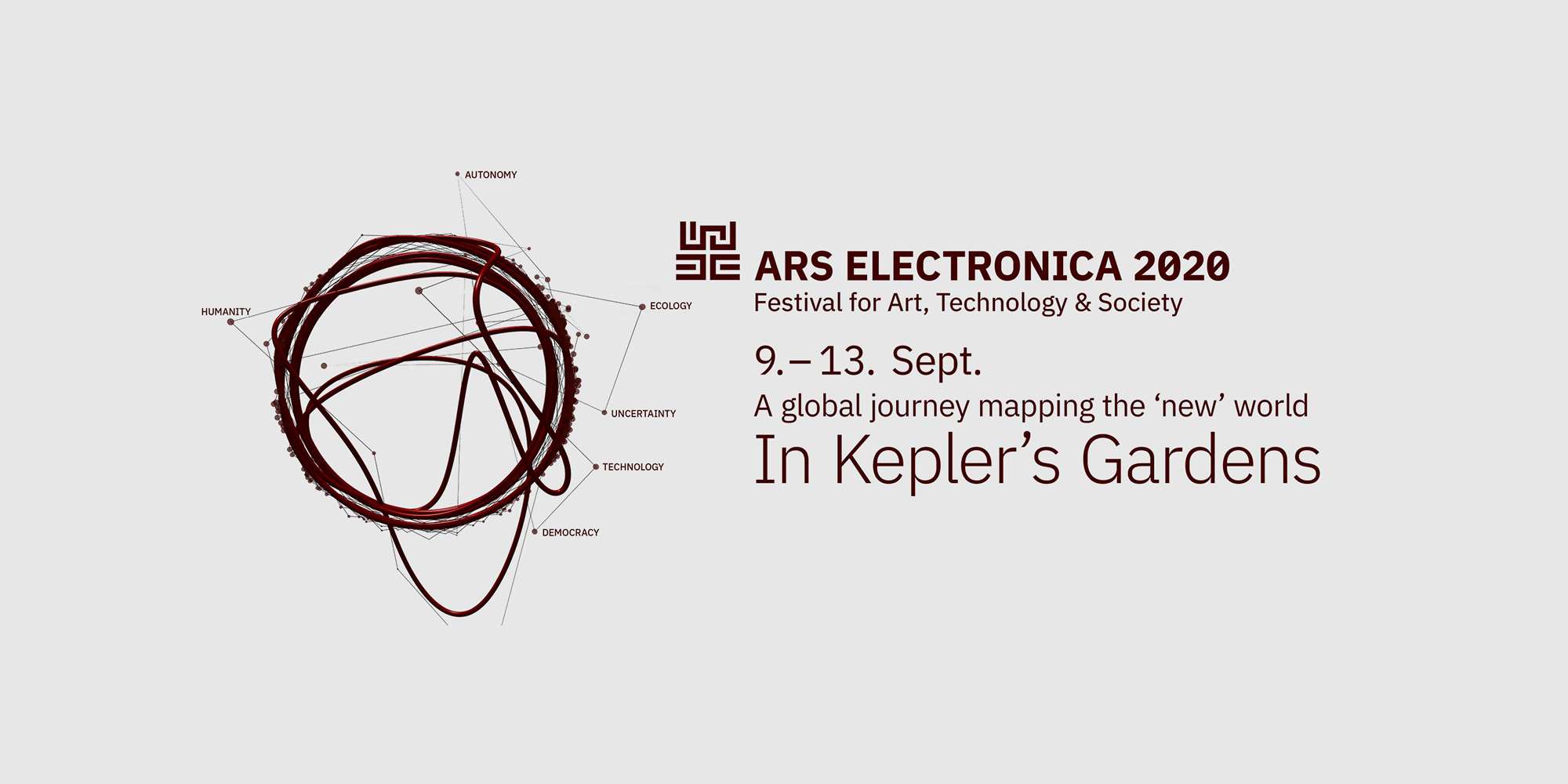Autonomy
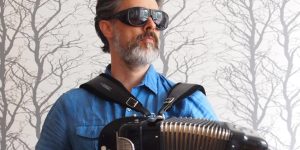
Machine folk music school
Bob L. T. Sturm (US)
Die "Machine Folk Music School" wird von Bob L. T. Sturm (US) per Videokonferenz geleitet. Er lehrt eine KI-generierte Volksmelodie in der klanglichen Tradition. Alle Musikinstrumente sind willkommen.

Folk the Algorithms
Bob L. T. Sturm (US)
Sturm builds, learns from and collaborates with AI systems trained on transcriptions of traditional music. These systems effectively generate an unlimited supply of new tunes imitating traditional ones. Sometimes these tunes are perfect as they are, and sometimes they are imperfect in interesting ways, but they all lack the credentials of “real” traditional tunes.
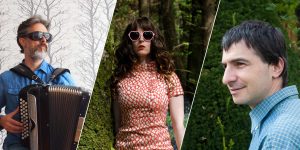
Musik als Erlebnis im Zeitalter von künstlicher Intelligenz und kreativen Computern
Kingston University and Durham University (UK), New York University (US), Hochschule für Musik und Darstellende Kunst, Stuttgart (DE), University of Music and Performing Arts of Vienna (AT), KTH Stockholm (SE)
In diesem Panel werden wir erörtern, wie KI menschliche Kreativität fördern beziehungsweise einschränken kann. Wie kann KI beim Musizieren eingesetzt werden? Sollte KI überhaupt zum Musizieren verwendet werden? Sollte mit KI gemachte Musik einen Warnhinweis tragen? Inwieweit ist KI nur ein Marketinginstrument? Was kann KI zur eigenen kreativen Praxis beigetragen? Was sind die ethischen Fragen im Zusammenhang mit KI beim Musizieren? Welche potentiellen Gefahren birgt die KI für die Musik (MusikerInnen als auch HörerInnen)? Wie könnten wir Risiken reduzieren?

PSM presents Catherine Biocca
PSM Gallery (DE)
Within her body of work, Catherine Biocca frequently shapes environments that insinuate total autonomy from the viewer’s reality. It is almost as if, by visitation, we are actually intruding upon private property or a theater stage, interrupting the very happenings taking place. Her characters, often recognizable as anthropomorphized assemblages, are consistently active and presently conscious within their surroundings.
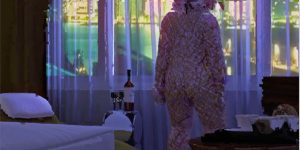
Daata presents Eva Papamargariti
Daata (UK)
Eva Papamargariti's work explores the relationship and construction of the limits between virtual space and material reality, as well as the dynamic dissolution that takes place on the verge of these two “ecosystems.” Her practice delves into issues and themes related to simultaneity, the merging of our surroundings with the virtual, the constant diffusion of fabricated synthetic images that define and fragment our identity as well as the symbiotic procedures and entanglement that take place between humans, nature and technology.

An Online Tour of Dublin’s Tech Infrastructure
Dublin is host to the European headquarters of many of the most powerful and influential tech companies of the modern era, and has become an important strategic location within the context of debates surrounding data sovereignty, privacy and security. By connecting our own personal interactions on digital platforms to the corporate offices in the city centre and to the data centres that surround the city, this tour critically engages with these debates, whilst also reflecting on our relationship with our personal data as it passes through the many visible and invisible networks that surround us.

Citizens' Think-in on Artificial Intelligence
Artificial Intelligence (AI) is playing a growing role in our lives. Machine learning tools help determine the ads you see online, the news you read and the products you purchase. Every time we send a text, use a credit card or sync a wearable device we are sharing personal information about ourselves. But what are the social consequences of AI? How is our information being used? Who is setting the policies and regulation? And how can AI affect our privacy and civil liberties?
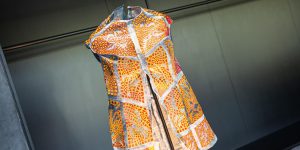
Re-Textiles 3D
Ganit Goldstein (IL)
Das Projekt Re-Textiles 3D hat zum Ziel, ein neues Produktionssystem für die Modeindustrie zu entwickeln, das auf einem spezifischen Körperscan unter Verwendung der neuesten Tiefenkamera-Technologie basiert. Das Projekt erforscht digitale Messsysteme, die die genaue Größe bestimmter Personen ohne jegliche menschliche Berührung bestimmen können. Das Projekt verwendet recyceltes Filament, das zu 100 % aus Wasserflaschenabfällen durch ein FDM-3D-Druckverfahren hergestellt wird. Dieses fördert den Umschwung der Produktion in Richtung Kreislaufwirtschaft und nachhaltiger Systeme.
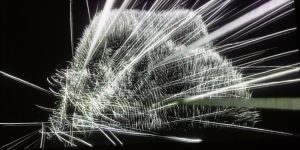
Topographie Digitale
DataPaulette (FR)
Topographie Digitale ist eine interaktive Installation. Diese Landschaft verwendet elektrisch funktionalisierte und plissierte Textilien als sensible Oberflächen, die auf Berührung reagieren. So kann mit einem video-projizierten digitalen Klon dieser Szenerie interagiert werden.
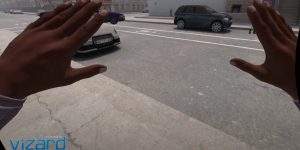
Addressing Ethics, Bias and Colonial Legacies in Emerging Media
Courtney D. Cogburn (US), Moderator: Jesse Damiani (US)
In this talk, we will examine the relationship that emerging technologies have with the past, ranging from biased algorithms to the unequal degree of access that has been granted to different communities—and by extension how they have been respectively represented in media and technology. As art created with these technologies increasingly enters the public discourse, how can artists thoughtfully engage these media as tools to subvert the legacies of colonialism rather than unwittingly reinforce them?

Autonomy & AI: Who is using Who?
Sari Depreeuw (BE), Francesco D’Abbraccio aka LOREM (IT)
Creative Artificial Intelligence and Generative Adversarial Networks (GANs) are by now daily used in the production of images, videos and art. This creative relationship is exciting yet not very clear. Largest part of production feeds into popular deep fakes and face swapping tendencies. We do feel a layer of suspense and concern when it comes to ownership of AI produced artworks. For this reason, we are meeting an expert in digital law, AI media artist, to discuss the role of AI in society today and tomorrow.
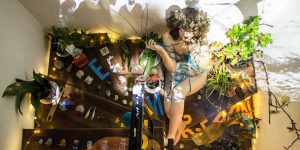
Exhibition VR Room: Did I invite you to exhibit here?
Verónica Francés (ES)
Did I invite you…? hits pause (II) on the imposed new normal to articulate a deeper timeline -millenia back (<<)-, while including multiple parameters -molecular or cosmic (@)- in the analysis.
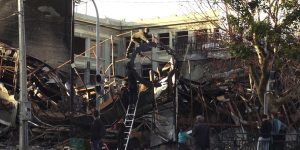
Irons
Gustavo Celedón Bórquez (CL)
A documentary-essay film of an art-action made in Valparaíso, Chile, in December 2019. The country had risen without return against a ruthless neoliberal economy. On a ruin of irons, a metaphor about the ending of modernity, this small art-action makes a conjuration with the installation of a symbol that sentences a destiny of justice and equality.
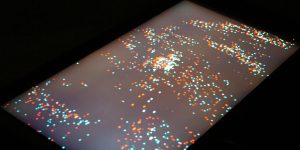
Kōrero Paki (Our stories of the legends)
Yinan Liu (NZ), Jermaine Leef (NZ), Uwe Rieger (DE/ NZ), Holly White (NZ)
Kōrero Paki nimmt Schlüsselmomente aus der Maori-Mythologie und verwandelt sie in holografische 3D-Skulpturen, die auf dem Smartphone aufscheinen. Das Projekt verwendet eine anaglyphe stereoskopische Darstellungsmethode, um holographische Mini-Skulpturen zu schaffen. Durch eine einfachen Rot/Cyan-Kartonbrille betrachtet, scheinen diese Skulpturen über der Oberfläche eines Smartphones zu schweben und in der Hand der BetrachterInnen zu tanzen.

Mini concert for web applications
WRO Art Center team (PL)
Performed by the WRO Art Center team exploring the full potential of web applications by Paweł Janicki. Create your own scores for live audiovisual performances.
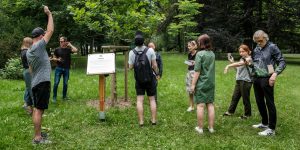
Noumen Point at Szczytnicki Park
WRO Art Center team (PL)
Video documentation of the meeting accompanied with author’s introduction to the topic of Noumen sound universe. The event was organized at the Szczytnicki Park close to the plane tree, an example of Wrocław’s long-time signature species.

Noumen
Paweł Janicki (PL)
Sound artwork that combines three installations located physically in the public space of Wrocław. One of them is the plane tree, which was featured as the central component of the installation E.D.E.N. by Olga Kisseleva displayed at the Four Domes Pavilion during the 18th Media Art Biennale WRO 2019 CZYNNIK LUDZKI|HUMAN ASPECT.

Mechanical Garden after Tytus Czyżewski
Paweł Janicki (PL)
Interactive installation inspired by visual poem Ogród Mechaniczny (Mechanical Garden”) by Tytus Czyżewski (1922) re-created in a contemporary medium (software). The work touches on issues of conditional arts, synthetic nature and the relation of art, nature and technology in general. Ogród Mechaniczny is a multiuser installation based on motion tracking, transforming the “frozen” image by Czyżewski into an amorphous, interactive and playable situation.
![quartets online, Yamaguchi Center for Arts and Media [YCAM] (JP)](https://ars.electronica.art/keplersgardens/files/2020/08/Yamaguchi_1_quartets_online@quartets_team-1-300x150.jpg)
quartets online
Otomo Yoshihide + Norimichi Hirakawa + Yuki Kimura + Ko Ishikawa + Yoshimitsu Ichiraku + Jim O’Rourke + Kahimi Karie + Sachiko M + Axel Dörner + Martin Brandlmayr + YCAM
"quartets" is a performance piece that happens only in the video streaming system. Eight musicians performed improvisation individually for the recording, as they imagined a session with the others. In this piece, the performances are blended or combined at random, and each time a whole new set of improvised music comes to exist. In "quartets", we will conceive the meaning of ensemble and questioning how we could imagine "others" in this isolated and increasingly complex situation.
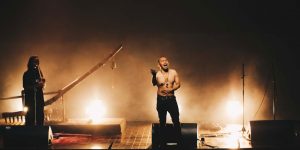
Sound Tectonics #24: Mystic Rhythm
SENYAWA / Wukir Suryadi & Rully Shabara (ID) & Kakushin Nishihara (JP)
Sound Tectonics is a long-run series of live performances and music events that have been held by YCAM since 2004. This program emphasizes listening experience through a different aspect of music production, sound art, and stage production. This time, we want to highlight the possibilities between modern (audio) technology and traditional/ancient sounds by inviting Senyawa (Indonesia) and Kakushin Nishihara (Japan). Both musicians are known to combine those two aspects and bring a new sound.
